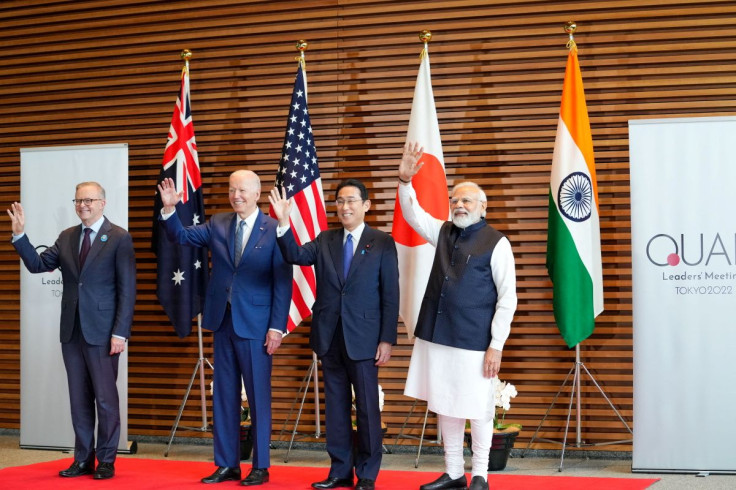India, Japan Conduct Navy Drills In Bay Of Bengal To Counter Chinese Assertiveness
KEY POINTS
- Both countries recently held their second 2+2 ministerial dialogue in Tokyo
- Talks between India and Japan centered around mutual security and defense concerns
- India is concerned about China expanding presence in the Indian Ocean region
- Japan is worried about Chinese assertiveness and has condemned Chinese military drills near Taiwan
The navies of India and Japan are conducting a week-long joint military exercise in the waters off India's east coast. The naval exercises follow the recently held "two-plus-two" security dialogue between the two countries, both of which face serious security challenges posed by increasing Chinese assertiveness.
The sixth edition of Japan India Maritime Exercise 2022 (JIMEX 22) commenced in the Bay of Bengal on Sunday and is being hosted by the Indian Navy, according to a statement by the country's Defense Ministry. The exercises, which involve two phases, will be held at sea and in the harbor at Visakhapatnam.
This year's exercise coincides with the 70th anniversary of the establishment of diplomatic relations between India and Japan.
"JIMEX 22 seeks to consolidate the high degree of interoperability that exists between maritime forces of the two countries, through complex exercises in the surface, sub-surface and air domains," the Indian Defense Ministry's statement added.
The drills involve helicopter carrier Izumo and destroyer Takanami on the Japanese side, joined by the Indian navy's destroyer INS Ranvijay and frigate INS Sahyadri.
India and Japan held their second India-Japan 2+2 ministerial dialogue in Tokyo on Sept. 8. Talks between the two countries which centered around security and defense concerns were attended by Indian Defense Minister Rajnath Singh and Foreign Minister Dr. S. Jaishankar with Japan's Defense Minister Yasukazu Hamada and Foreign Minister Yoshimasa Hayashi.
In an effort to expand its indigenous ship-building capabilities and counter Chinese assertion in the region, India recently commissioned its first home-built aircraft carrier INS Vikrant, with Indian Prime Minister Narendra Modi saying that security concerns in the Indo-Pacific region and the Indian Ocean have been ignored for too long.
In recent years, China has expanded its presence into the Indian Ocean region. In August, Beijing sailed a navy vessel to a Chinese-built port in the Sri Lankan port of Hambantota despite security concerns raised by New Delhi. China claimed it was a scientific research vessel. However, India and foreign security experts called it a Chinese naval ship that's been used in the past to track satellites and missiles.
Japan had recently condemned Chinese military drills near Taiwan following the visit of House Speaker Nancy Pelosi to Taipei in August as a "grave problem" and a threat to regional peace and security after five ballistic missiles landed in Japan's exclusive economic zone (EEZ). The country is concerned that China would invade the disputed Japanese islands of Senkaku as part of its efforts to conquer Taiwan - a self-ruled democracy - that Beijing considers its own to be reunified with the mainland, by force if necessary.
In response to concerns over China's growing assertiveness in the region, the Indian navy last year sent four warships to Southeast Asia, the South China Sea and Western Pacific to participate in bilateral exercises with several countries and hold multilateral exercises with members of the other "Quad" group of nations – the United States, Japan and Australia.

© Copyright IBTimes 2024. All rights reserved.






















